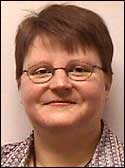Jun 04, 2004It's something that many people thought they'd never see—archrivals Alien Technology and Matrics teaming up. But that appears to be the case after an unusual meeting
of the EPCglobal working group that is responsible for recommending a specification for a second-generation EPC protocol for the UHF band.
At the start of the meeting last week in Anaheim, Calif., there were three proposals for a Gen 2 specification. The Unified Proposal was supported by heavyweights Intermec, Philips Semiconductors and Texas Instruments, as well as 10 other companies. The Performance Proposal was backed by Atmel, EM Microelectronic Marin, Matrics, RFIP Solutions and others. Alien Technology, STMicroelectronic and other unnamed companies supported the Q Proposal.
At the start of the meeting, the Performance Proposal was withdrawn, which surprised some people in attendance. EM Microelectronic Marin and RFIP Solutions joined the companies supporting the Unified proposal, which was renamed the Global Proposal. Matrics and Atmel joined forces with Alien and submitted a new proposal, called the Freedom Proposal, which replaces the Q Proposal.
The news of an alliance between Alien and Matrics, two companies that have been competing aggressively in the EPC market, might have been the biggest surprise at the meeting. But sources tell RFID Journal that the companies have actually been working together for the past six weeks on a specification that combines some of the best features of the Q Proposal backed by Alien and the Performance Proposal.
While the meeting produced some surprises, it also produced some results, according to Sue Hutchinson, EPCglobal's product manager and facilitator for the organization’s Hardware Action Group. "We're continuing to see good progress out of the UHF Gen 2 Working Group," she says. "We originally started with four proposal submissions. The teams continued to work through the technical issues, and we are now down to two proposals. We spent a good deal of time last week looking at detailed technical analyses of both of those proposals. We are continuing to vet both them against stringent end-user requirements."
A meeting will be held in Chicago in June 7 to try to merge the two remaining proposals into a single consensus proposal. "We discovered that the two proposals, while they are philosophically different, both have the potential to meet the end-user requirements," says Hutchinson. "The differences between them can be counted on less than two hands, so we feel very positive that we have some ground that we can cover between the two teams that will help us get to a single consensus proposal by the end of this month."
If a consensus isn't reached by the end of June, then the UHF Gen 2 Working Group will vote on which of the two remaining proposals it prefers. It will then produce a "last-call working draft" of the UHF Gen 2 specification, which will have to pass several more stages in the standards-development process—the prototyping and validation phases, and another round of vetting by the Hardware Action Group—before it can be ratified by the EPCglobal board of governors.
End users would like to see a standard approved before the end of the year. EPCglobal's timetable calls for the final vote in October. Companies could have prototype tags available a few months after that. Hutchinson says that regardless of which proposal is chosen in the end, companies shouldn't have to wait long to see the first prototype Gen 2 products.
Attend RFID Journal University
There is less than a week left until RFID Journal University in the Washington, D.C., area. This unbiased educational course, presented by RFID Journal and members of Auto-ID Labs, is designed to provide the fundamental understanding of RFID needed to begin a successful pilot. Register today, or to learn more, visit RFID U.


